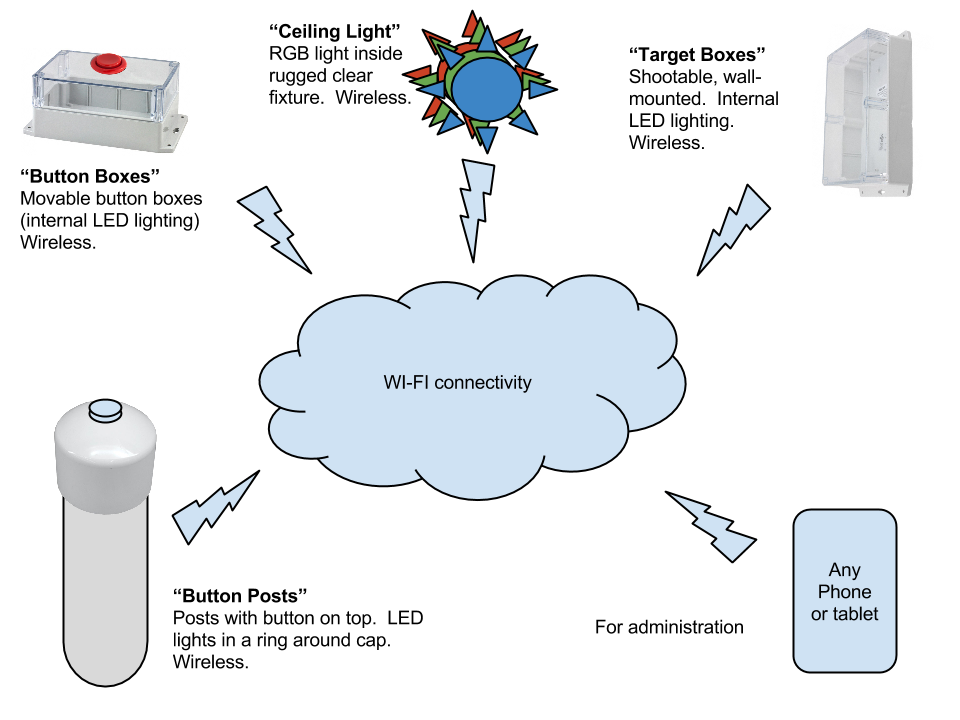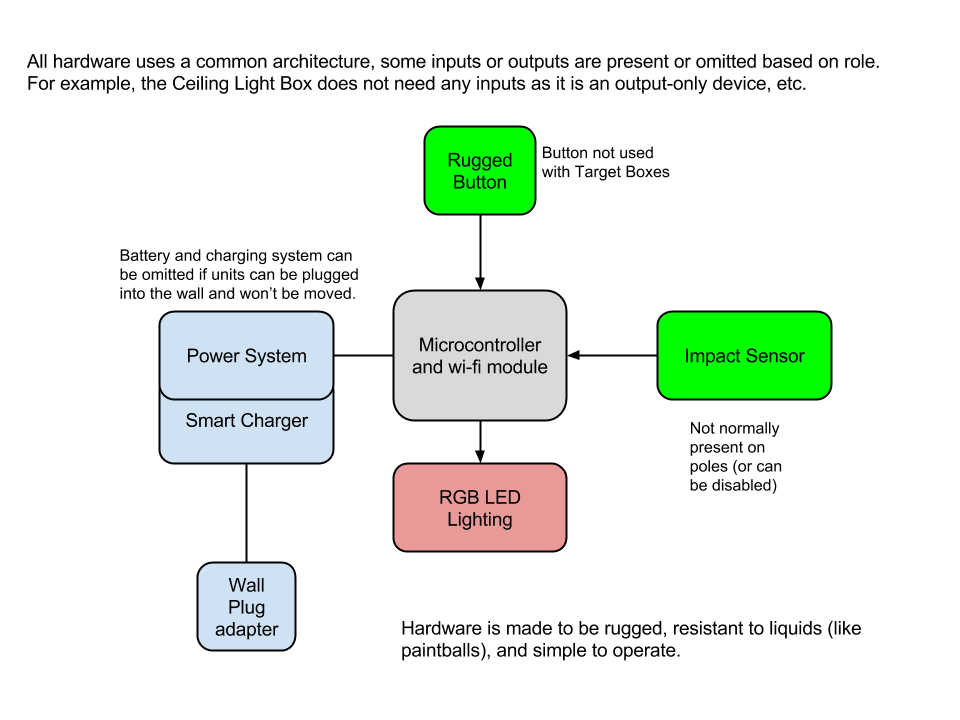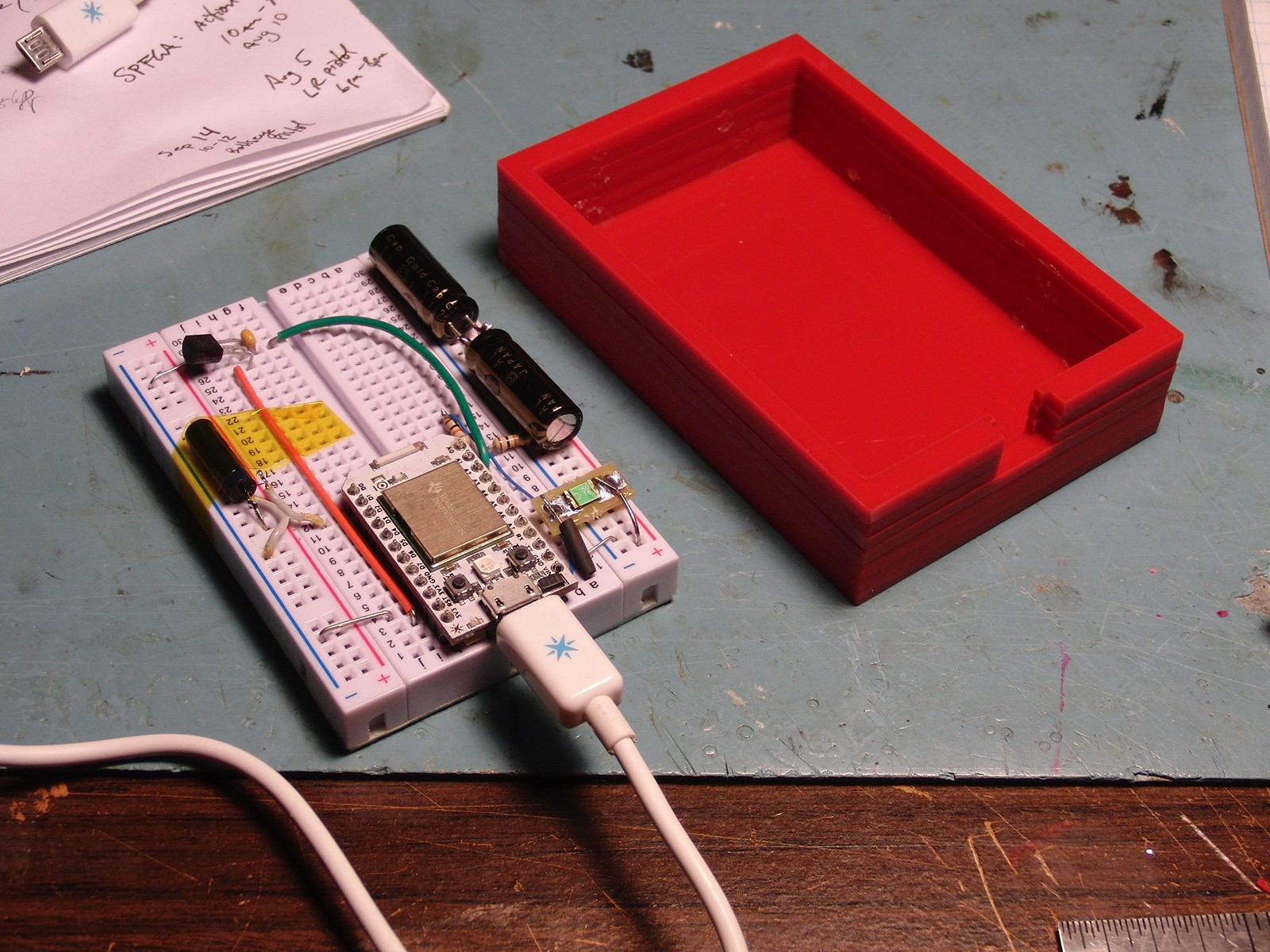Shootable panels that change colors with every hit. LED-lit posts that change to your team's color when you capture them. LED-illuminated boxes that change colors as you activate them. A ceiling-mounted light that shows who is currently winning at a glance. And every part can be controlled by staff from any smartphone or tablet! Open-sourced, and reprogrammable over the Internet.
I mentioned that this design is based on years of experience - including years of making things more complex than they truly needed to be!
Overall System Design
- Use as many or as few of each component as you wish. Small field? Use one or three Button Boxes. Big field? Use as many as you like!
- Individually each piece of hardware can be used "offline". Things are simply more efficient when there is network connectivity giving each unit awareness of the others.
- For example: "Target Boxes" (which can be easily wall-mounted) for example switch colors every time they are shot. They can be used as a target gallery for fun, or in a game (change the box colors to your team color to get a point).
- Same with the "Button Boxes" or the "Button Posts" - hit the button to switch their color to your team color. The team with the most units switched to their color after 5 minutes wins. (Experience has shown that this is by itself very fun for players.)
- However when network connectivity exists, the "Ceiling Score Light" can now always display the leading team's color. Time limits can be automated. Resetting the units can be done by any smart phone or tablet.

Experience shows that anything that makes games more enjoyable for players, more predictable in length, and easier to "reset" is a big advantage from the referee's point of view.
Everything can be reprogrammed over the Internet - a huge advantage for development because it means you don't need to be on-site.
Hardware Block Diagram
- Each piece of hardware is quite similar on the inside - the main differences are in the mechanical design (shape, etc) and software.
- The "role" of a piece of hardware is determined not only by it's physical design (Posts work the same as Button Boxes but look different) but also by the software - which decides what they do and why.
- The current design integrates the Spark Core - which provides the cloud and network infrastructure.

A significant part of design - not represented here - is the mechanical and physical design. The hardware must be able to survive harsh use including rough handling and being drenched in splattered paintballs.
Here is a video describing how the system works:
You can watch in HD (so you can read the captions) here.
 Minimum Effective Dose
Minimum Effective Dose